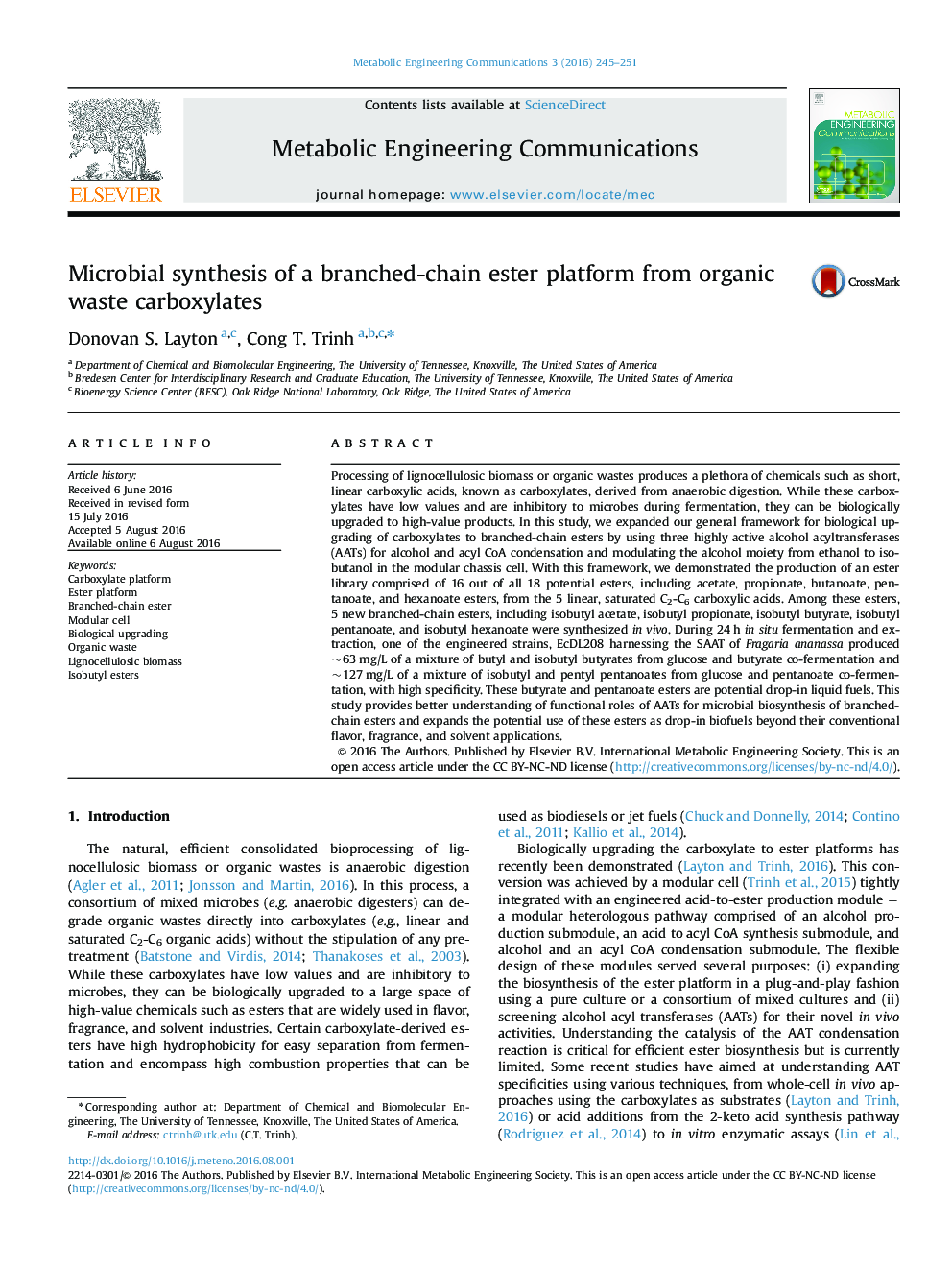| Article ID | Journal | Published Year | Pages | File Type |
|---|---|---|---|---|
| 571857 | Metabolic Engineering Communications | 2016 | 7 Pages |
•Expand the general framework for microbial biosynthesis of branched-chain ester platforms.•Biologically upgrade 5 carboxylates to 16 out of a total of 18 potential esters.•Characterize in vivo three alcohol acyltransferases for branched-chain ester biosynthesis.•Discuss targeted esters as potential fuels beyond flavor, fragrant, and solvent applications.
Processing of lignocellulosic biomass or organic wastes produces a plethora of chemicals such as short, linear carboxylic acids, known as carboxylates, derived from anaerobic digestion. While these carboxylates have low values and are inhibitory to microbes during fermentation, they can be biologically upgraded to high-value products. In this study, we expanded our general framework for biological upgrading of carboxylates to branched-chain esters by using three highly active alcohol acyltransferases (AATs) for alcohol and acyl CoA condensation and modulating the alcohol moiety from ethanol to isobutanol in the modular chassis cell. With this framework, we demonstrated the production of an ester library comprised of 16 out of all 18 potential esters, including acetate, propionate, butanoate, pentanoate, and hexanoate esters, from the 5 linear, saturated C2-C6 carboxylic acids. Among these esters, 5 new branched-chain esters, including isobutyl acetate, isobutyl propionate, isobutyl butyrate, isobutyl pentanoate, and isobutyl hexanoate were synthesized in vivo. During 24 h in situ fermentation and extraction, one of the engineered strains, EcDL208 harnessing the SAAT of Fragaria ananassa produced ~63 mg/L of a mixture of butyl and isobutyl butyrates from glucose and butyrate co-fermentation and ~127 mg/L of a mixture of isobutyl and pentyl pentanoates from glucose and pentanoate co-fermentation, with high specificity. These butyrate and pentanoate esters are potential drop-in liquid fuels. This study provides better understanding of functional roles of AATs for microbial biosynthesis of branched-chain esters and expands the potential use of these esters as drop-in biofuels beyond their conventional flavor, fragrance, and solvent applications.
